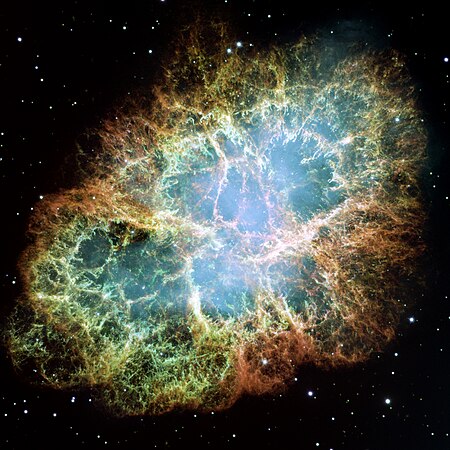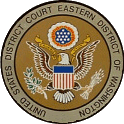Mapungubwe National Park
| |||||||||||||||||||||||||||||||
Read other articles:

Stasiun Shinano-Sakai信濃境駅Stasiun Shinano-Sakai pada Desember 2010LokasiSakai, Fujimi-cho, Suwa-gun. Nagano-ken 399-0101JepangKoordinat35°53′06″N 138°16′32″E / 35.8850°N 138.2755°E / 35.8850; 138.2755Ketinggian921.4 meter[1]Pengelola JR EastJalur■ Jalur Utama ChūōLetak dari pangkal178.2 km dari TokyoJumlah peron2 peron sampingJumlah jalur2Informasi lainStatusTanpa stafSitus webSitus web resmiSejarahDibuka1 November 1928PenumpangFY2015166 ...

Alto MiraAltu MiraAlt' Mira Dados Estatísticos Ilha: Santo Antão Município: Porto Novo População: 1.003 (2010) Altitude:Baixo:Centro:Alto: Oceano Atlânticoaprox. 300 maprox. 1.100 m Distâncias ver capital insular: nordoeste de Porto Novo (via rua) Alto Mira (Crioulo cabo-verdiano, ALUPEC: Altu Mira, Crioulo do Santo Antão: Alt' Mira) é uma aldeia do município de Porto Novo na zona noroeste da ilha do Santo Antão, em Cabo Verde. A aldeia localiza-se em uma planalto. Este de aldeia e...

Paleá KokkiniáNom local (el) Παλαιά ΚοκκινιάGéographiePays GrècePériphérie AttiqueDistrict régional Le PiréeDème dème du PiréeGrande ville Le PiréeCoordonnées 37° 57′ 52″ N, 23° 39′ 30″ EFonctionnementStatut Église orthodoxe (en) Géolocalisation sur la carte : Grèce Géolocalisation sur la carte : Attique Géolocalisation sur la carte : Pirée modifier - modifier le code - modifier Wikidata Paleá ...

15691 МасловВідкриттяВідкривач Карачкіна Людмила ГеоргіївнаМісце відкриття КрАОДата відкриття 14 жовтня 1982ПозначенняТимчасові позначення 1982 TF1 1999 GS48Категорія малої планети Астероїд головного поясуОрбітальні характеристики[1] Епоха 23 травня 2014 (2 456 800,5 JD)Велика півв

?Акулохвостий скат Rhynchobatus australiae Біологічна класифікація Царство: Тварини (Animalia) Тип: Хордові (Chordata) Підтип: Черепні (Craniata) Інфратип: Хребетні (Vertebrata) Надклас: Щелепні (Gnathostomata) Клас: Хрящові риби (Chondrichthyes) Підклас: Пластинозяброві (Elasmobranchii) Надряд: Скати (Batoidea) Ряд: Лопатоносі �...

A 1964 45 fils stamp of Kuwait. This is a survey of the postage stamps and postal history of Kuwait. Early posts The postal history of Kuwait begins around 1775, when the East India Company began an overland desert camel service from the head of the Persian Gulf to Aleppo and Constantinople as an alternative to slower sea travel around the Arabian Peninsula. This service operated until 1795.[citation needed] Treaty with the British A KUWAIT overprint on a 1934 4 Anna stamp of India. A...

2013 Indian filmMoondru Per Moondru KadalTheatrical release posterDirected byVasanthWritten byVasanth (Dialogue)Screenplay byShankar RamanVasanthStory byVasanthProduced byBharath KumarMahendhiranMaha Ajay PrasathStarringArjunCheranVimalSurveen ChawlaMukthaLasiniCinematographyBhojan K. DineshEdited byS. N. FazilVasanthMusic byYuvan Shankar RajaProductioncompanyMahendra TalkiesRelease date 1 May 2013 (2013-05-01) CountryIndiaLanguageTamil Moondru Per Moondru Kadal (pronounced ...

Харківський базовий медичний коледж №1 Тип навчальний закладАкредитація ІІ рівняЗасновано 1 березня 1845 Директор Панченко Микола Сергійович[1]Студентів ~ 1 000Адреса 61002, м. Харків, Куликівський узвіз, 3[2]Сайт kbmk.kharkov.ua Не плутати з Харківським медичним коледжем

هذه المقالة يتيمة إذ تصل إليها مقالات أخرى قليلة جدًا. فضلًا، ساعد بإضافة وصلة إليها في مقالات متعلقة بها. (مايو 2021) الهدف 10 من أهداف التنمية المستدامة الهدف 10 من أهداف التنمية المستدامة الموقع الرسمي الموقع الرسمي تعديل مصدري - تعديل يتعلق الهدف 10 من أهداف التنمية الم

First page of the autograph of cantata Wir danken dir, Gott, wir danken dir, BWV 29 Lists ofCompositions by Johann Sebastian Bach BWV Cantatas (sacred – secular) Motets Masses, Passions and Oratorios Chorale harmonisations Songs and arias Organ compositions Keyboard and lute compositions Chamber music Orchestral works Fugal works Transcriptions Printed during the composer's lifetime Lost, doubtful and spurious vte This is a sortable list of Bach cantatas, the cantatas composed by Johann Seb...

هذه المقالة يتيمة إذ تصل إليها مقالات أخرى قليلة جدًا. فضلًا، ساعد بإضافة وصلة إليها في مقالات متعلقة بها. (مارس 2023) لمعانٍ أخرى، طالع عبد الله الحربي (توضيح). عبد الله الحربي معلومات شخصية الاسم الكامل عبد الله صالح الحربي تاريخ الميلاد 22 فبراير 1999 (العمر 24 سنة) مركز ال...

United States federal district court in Washington (U.S. state) United States District Court for the Eastern District of Washington(E.D. Wash.)LocationThomas S. Foley Courthouse(Spokane)More locationsWilliam O. Douglas Federal Building(Yakima)Federal Building(Richland)Appeals toNinth CircuitEstablishedMarch 2, 1905Judges4Chief JudgeStanley BastianOfficers of the courtU.S. AttorneyVanessa WaldrefU.S. MarshalCraig Thayerwww.waed.uscourts.gov The United States District Court ...

This article is about the Atlantis computer game. For other uses, see Cops and Robbers (disambiguation). 1985 video gameCops 'n' RobbersPublisher(s)AtlantisDesigner(s)Mike DavisProgrammer(s)Mike Davis (VIC, C64)Simon Leck (Atari)[1]Platform(s)VIC-20, Acorn Electron, Atari 8-bit, BBC Micro, Commodore 64, 16, Plus/4Release1985: VIC, C641986: C16, Plus/41987: Electron, BBC1988: AtariGenre(s)MazeMode(s)Single-player Cops 'n' Robbers is a video game published by Atlantis Software in 1985 f...

«Життя за життям» Обкладинка видання українського мовою видавництва «Наш Формат»Автор Кейт АткінсонНазва мовою оригіналу Life After LifeКраїна Велика БританіяМова АнглийскаяСерія Сім'я Тоддів (англ. Todd Family)Жанр Альтернативна історія (фантастика)РоманУкр. видавництво Наш...

Home Guardawalnya bernama Local Defence VolunteersPos Home Guard di Admiralty Arch, London pusat, 21 Juni 1940.Aktif14 Mei 1940 – 3 Desember 1944Negara Britania RayaCabang Angkatan Darat Britania RayaPeranPertahanan menghadapi invasiDibubarkan31 Desember 1945 Home Guard (awalnya bernama Local Defence Volunteers disingkat LDV) adalah milisi sipil bersenjata yang mendukung Angkatan Darat Britania selama Perang Dunia Kedua. Home Guard aktif tahun 1940 hingga 1944, memiliki 1,5 j...
Island in the Grenadines BequiaBequiaShow map of Saint Vincent and the GrenadinesBequiaShow map of Lesser AntillesBequiaShow map of CaribbeanGeographyLocationCaribbeanCoordinates13°0′N 61°14′W / 13.000°N 61.233°W / 13.000; -61.233Area7 sq mi (18 km2)AdministrationSaint Vincent and the GrenadinesDemographicsPopulationabout 5,300Ethnic groupsAfrican, Scottish and CaribAdditional informationBequia Marine Conservation AreaIUCN category VI (protected ...

Sweet sauce in Moroccan cuisine TfayaAssociated cuisineMoroccan Tfaya (Arabic: تفاية) is a sweet sauce in Moroccan cuisine made with caramelized onions, raisins, cinnamon, and honey.[1][2][3][4] It is often served on couscous.[5] Tfaya on top of Moroccan couscous with roasted chicken. References ^ Oubahli, Mohamed (2008). Le banquet d'Ibn 'Ali Masfiwi, lexique, notes et commentaires. Approche historique et anthropologique. Horizons Maghrébins - le...

Book by Daniel Clowes Cover of the 2002 paperback edition of Caricature Caricature is a book collection of nine comic short stories by Daniel Clowes. In contrast to earlier Clowes collections such as Lout Rampage! and Orgy Bound, Caricature concentrates on the more naturalistic, character-focused side of Clowes's output displayed in Ghost World. It includes some of his most admired short stories, including Immortal, Invisible, Gynecology and the title story. All the material in the collection...

Video gameRape DayDeveloper(s)Desk PlantPublisher(s)Desk PlantPlatform(s)WindowsReleaseCancelledGenre(s)Visual novel Rape Day is a cancelled indie adult visual novel developed by Desk Plant and originally intended to be released in April 2019. The story focuses on a serial killer and rapist who, during a zombie apocalypse, rapes and kills women. The game courted controversy online, where petitions for the game to be removed earned widespread support, and its page was removed from Steam in Mar...

Norwegian television channel Television channel FEMCountryUnited KingdomBroadcast areaNorwayOwnershipOwnerWarner Bros. Discovery EMEA (Warner Bros. Discovery)Sister channelsTVNorgeMAXVOXDiscovery Channel NorgeEurosport NorgeTLC NorwayHistoryLaunchedSeptember 3, 2007Former namesTVNorge 2 (2006-2007) (working title)LinksWebsiteOfficial websiteAvailabilityTerrestrialRiksTVChannel 10 FEM (the first letters of the word feminine or female and roughly homophonous with femme, but also the Norwegian w...

















